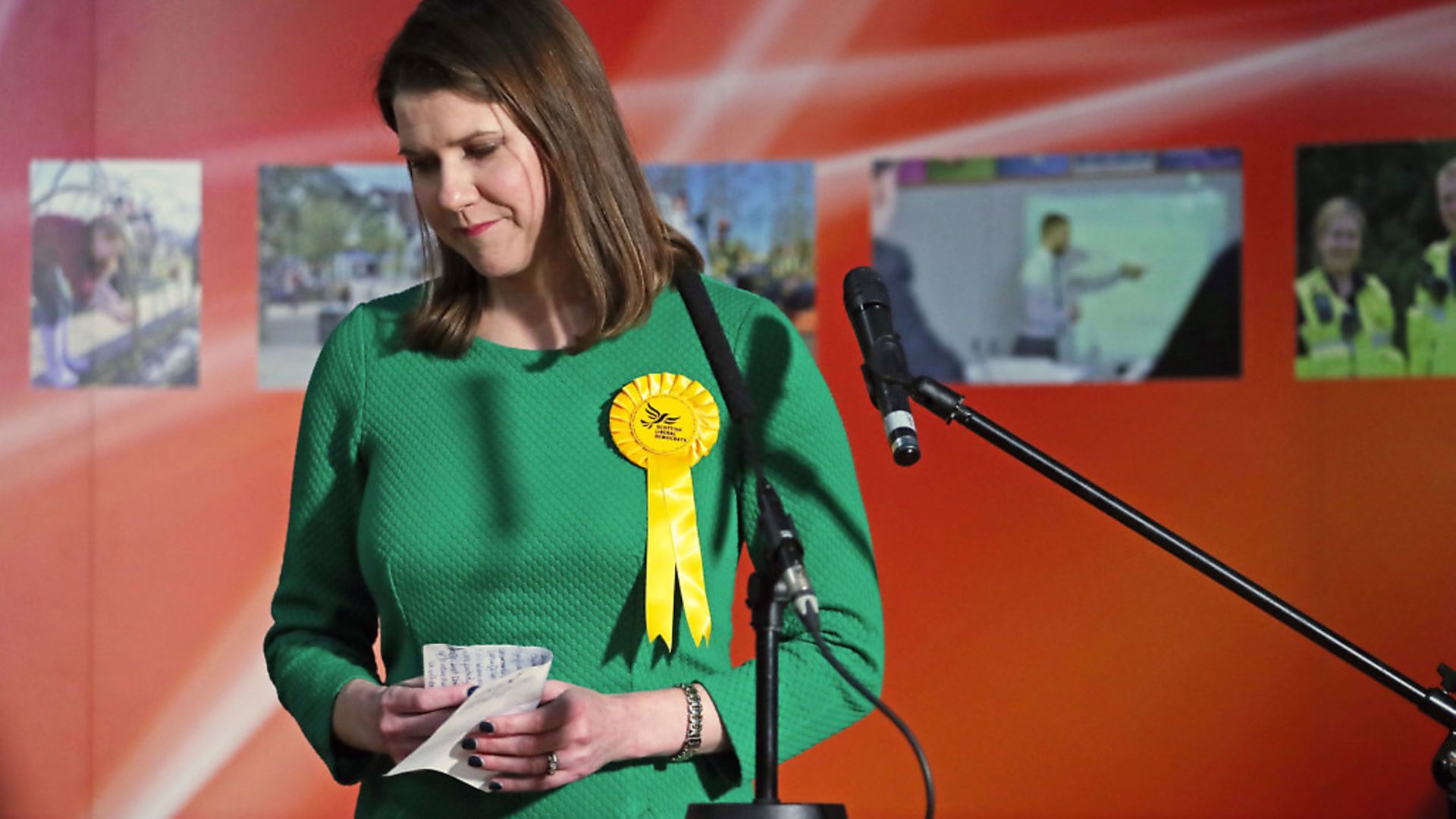
As the Lib Dems look for a leader and sense of direction, BARNABY TOWNS searches for signs in the data thrown up by last month’s election.
You don’t have to go too far back to remember a time when the Liberal Democrats were riding a wave of optimism. Last autumn the party was buoyed by a raft of defections, a by-election win, polling that peaked at 23%, and finishing ahead of the Tories and Labour in the earlier European elections.
The onset of the winter blues was swift and brutal, with a faltering election campaign and disappointing result, yielding only a two-seat gain alongside three losses and a parliamentary group of only 11 – or 12 if Alliance Party allies’ North Down win is counted, a seat standstill compared to 2017.
The party lost all three of its seats that voted Leave in 2016: Carshalton and Wallington, Eastbourne and Norfolk North. Wins from the Tories in strongly-Remain Richmond Park and St Albans, and against the Scot nationalists in
North East Fife, offset those. The loss of Jo Swinson’s East Dunbartonshire seat by 149 votes to the SNP completes the picture of modest parliamentary gains and losses. Other closely contested constituencies included near-misses in Remain-Tory Wimbledon, by 628 votes; Cheltenham (981); Winchester (985); and Remain-Labour Sheffield Hallam (712).
Indicative of the power of the Remain-Leave divide to shape 2019’s election were large swings to Lib Dem candidates in heavily Remain seats, the highest of which was 18.5% in formerly safe-Tory Esher and Walton, Brexiteer Dominic Raab’s seat.
Others included South West Surrey – home to Remainer-turned-Brexiteer Jeremy Hunt – (15.6%); Hitchin and Harpenden (15.4%); Wimbledon (15.4%); South Cambridgeshire – Tory defector Heidi Allen’s former seat – (14.4%); Finchley and Golders Green – where one-time Labour MP Luciana Berger was the candidate – (14.2%); Wokingham – with incumbent arch-Brexiteer John Redwood challenged by ex-Tory Phillip Lee – (14.2%); Winchester (14.0%); Cities of London and Westminster – where Labour-turned-Lib Dem Chuka Umunna stood – (13.4%); Guildford (12.5%); Surrey Heath – Vote Leave champion Michael Gove’s seat – (11.0%); St Albans (10.8%); and Theresa May’s Maidenhead (10.1%).
What do these seats with over 10% Conservative-Lib Dem swings – the national swing was 1.5% – have in common? From Surrey Heath, which voted Remain in line with the national average, to the seat Umunna contested, where Remain won 72.0%, these battles pitted Lib Dems against Tory Brexiteers in seats where Remain outperformed, or in Gove’s case equalled, its national showing.
While failing to make the net gains supporters, opponents and neutral observers anticipated, the Lib Dems did increase their vote share by more than the other main parties, earning a 4.2% boost. This compares favourably with the Tories’ 1.3% rise; the SNP’s 0.8% hike; and Labour’s 7.8% decline. In 264 constituencies Lib Dem candidates received the highest vote share increase – Tories did so in 158; Labour in only four.
Another sign of relative Lib Dem improvement is the number of constituencies in which the party came second. With only 7% of 2017’s popular vote, the party secured second place in a mere 38 seats; in 2019, the party achieved this status in 91 contests, 80 of which the Conservatives won.
Perhaps unsurprisingly given the party’s focus on appealing to Remain voters and targeting those in Tory seats, the Lib Dems did best away from the Brexit-backing Midlands, north of England and parts of Wales. In pro-Remain London, the party scored three points higher than nationally; while university, commuter and market towns pushed the Lib Dems six points higher than UK-wide in the south east and south west and one-point higher in eastern England.
In Scotland, unionist Lib Dems competed with the separatist SNP for the Remain vote, scoring 1.5% lower than the UK average. Lib Dem 11.5% national vote share in the 2019 election was a shade lower than the 13.5% 1945-2017 average.
And of the approximately 52% of voters who were Remainers, the Lib Dems won only one in five, despite placing Brexit front and centre of their campaign.
A poor campaign with bad messaging and a split Remain vote yielded underwhelming results that fell significantly short of the up to 100 seats touted by some months earlier. Revoking Article 50 in the unlikely event of an overall Lib Dem parliamentary majority and Swinson aiming to be prime minister unhelpfully dominated media – including after being dumped mid-campaign.
As the party chooses a new leader from among only 11 MPs, a Macron, Obama or Trudeau won’t be found. But as the 2020s begin with a majority of 80 for a strengthened nationalist-populist Conservative Party, threatening a decade-long reign, the Lib Dems, alone or with allies, must find one.
Liberals everywhere need the Lib Dems to raise their game.
Warning: Illegal string offset 'link_id' in /mnt/storage/stage/www/wp-includes/bookmark.php on line 357
Notice: Trying to get property 'link_id' of non-object in /mnt/storage/stage/www/wp-includes/bookmark.php on line 37






